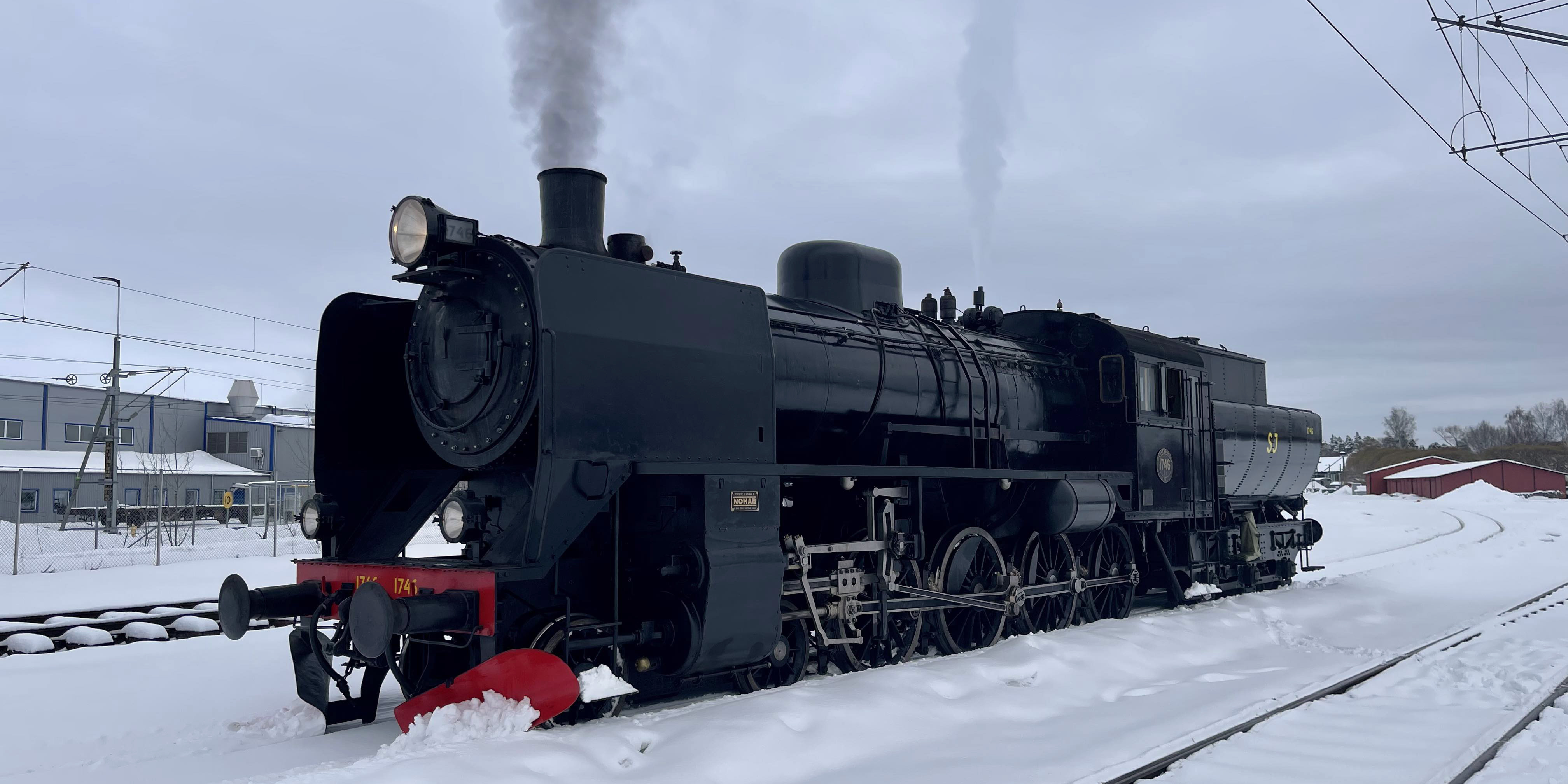
Steam locomotive E10 1746
The E10 1746 is quite modern for a steam locomotive, and was built for heavy freight trains on tracks with low axle load.
The locomotive has three cylinders, four axles and oil firing. It gives a very grand impression with its smoke deflectors – these large plates are designed to create a draught along the boiler so that the smoke rises above the cab and does not obstruct the driver's visibility.
This particular locomotive was designated an emergency locomotive for use in a crisis situation and parked in Lekomberg outside of Ludvika for quite some time. It eventually became a museum locomotive.
When SJ took over many different and old locomotives from private railway companies in the 1940s, there was a great need for renewal. The time was not yet ripe for large diesel locomotives, so following the example of Halmstad-Nässjö Järnvägar’s locomotive model with the designation G12 (which SJ called E9), SJ ordered ten model E10 locomotives, which were very similar to HNJ G12.
The E10 locomotive was delivered in 1947 and was used in freight traffic mainly on the Inland Line (Inlandsbanan) along the stretches Mora-Storuman, Storuman-Umeå as well as along the stretches Orsa-Bollnäs and Borlänge/Falun-Mora.
At present, the locomotive is still powered by diesel oil, but there are ambitious plans to replace diesel with fossil-free HVO fuel, thereby turning it into a fossil-free steam locomotive.
The locomotive is perfect for travelling with Vildmarkståget, “the Wilderness Train”, on the Inland Line.
Manufactured
Locomotive by Nydqvist & Holm AB in Trollhättan, 1947; tender by Vagn och Maskinfabriken in Falun, 1946
Length
18.1 metres
Weight
116.2 tonnes
Tractive effort
12.1 tonnes or about 1,350 hp
Maximum permitted speed
70 km/h forward and 40 km/h reverse